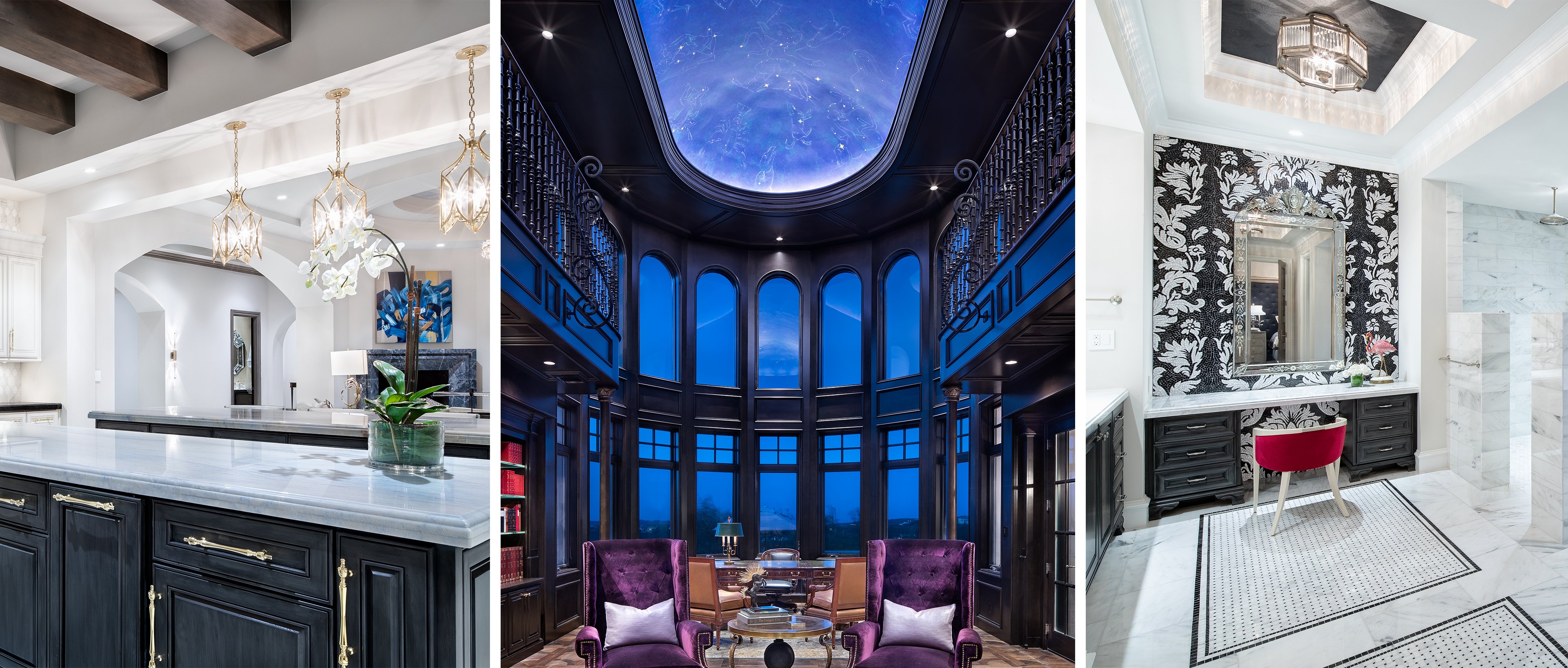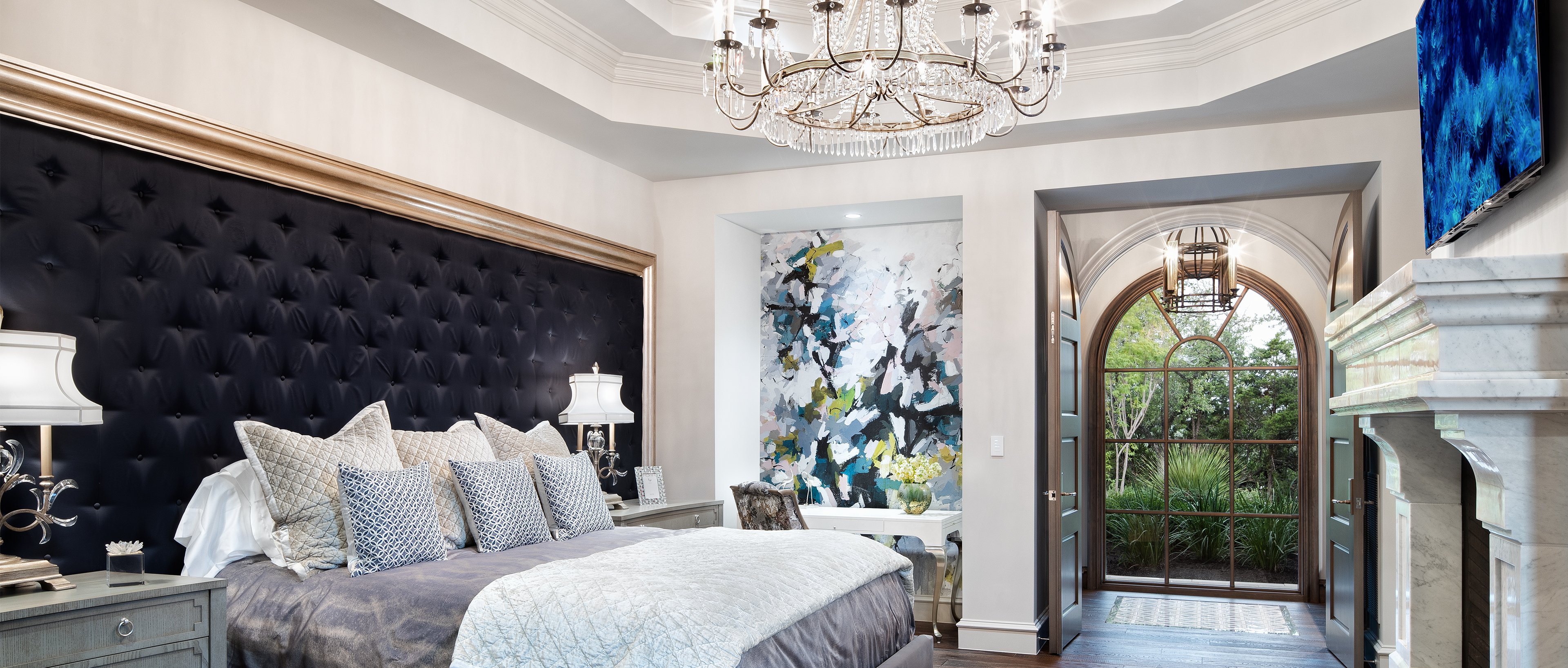Ranked #19 out of the Top 100 A/V Companies in the nation, Service Tech is a leading residential systems integrator. While they call Central Texas home, ServiceTech has projects all over the world — including Singapore, New Zealand, Bogota, Germany, England, and several US states. Expert planners (so their clients don’t have to be), Service Tech’s mission is to deliver unique solutions that reflect how each client works, lives and plays in their space.
I recently had the privilege of speaking with Service Tech VP Shannon Bush, a powerhouse in the integrator business. Shannon gave us an in-depth look at the industry trends that she’s seeing, along with highlights from her unique career journey and what it’s been like to work with Ketra technology from the very beginning.

Service Tech created an integrated smart home solution for this Texas Hill Country Home with Ketra lighting.
1. What drew you to the field of home technology — where did those seeds get planted?
It’s kind of a funny story. I don't have an engineering background, and I don't come from the installation industry — I come from business. I was working for a private defense contractor who was doing low voltage work for Navy hospitals. But when the government contracts began tightening down on their decision-making, I started to become disenchanted with the whole process. One of my colleagues had a connection in the AV industry — doing the same type of work, but for private residential clients, and introduced me to them. I ended up signing on with their firm and started there. It was a smaller company, and I had a great mentor there. I learned a ton — it was a real hands-on environment that required you to learn fast and know your stuff. I had to do all facets of the business, which really helped to launch my career and get me to where I am now. I’m able to manage all the different departments because I've done almost every job.
2. What kind of trends are you seeing in residential design and technology — how is the market evolving, and what do people want now?
One of the biggest evolutions that I think everyone can acknowledge is lighting — the control of both natural and unnatural light, through interior and exterior light fixtures. And tunable colors; color-changing is a huge trend right now. What’s also interesting is that AV integrators are starting to sell these fixtures, because the fixtures now have to be programmed and typically electricians have not been in the programming field. So programmers from the AV field are getting into fixtures — that's a really large change.
The other major shift, I would say, is the DIY market. Thanks to the Best Buys and even the Walmarts of the world, consumers are being educated about all these accessible products — for better and for worse. I think those two shifts are going to highlight both ends of the spectrum. The DIY market is going to start gobbling up the lower end of the integrator market, while luxury fixtures are going to open up a whole new vertical for integrators who are willing to take that on.
The partnerships we have with companies like Ketra and Lutron enable us to present incredible solutions to our clients — without that, we wouldn’t be able to do half of what we do, so I’m very thankful these kinds of partnerships exist.”
3. How do you talk to homeowners about the possibilities of creating an experience with light?
I think one of the most interesting things is to really get into how our clients live in their space, because it's not just about selling a great product or selling premium products — it's about how it applies to their life and lifestyle. We ask a lot of questions: Are they major art collectors? Because great art requires a certain type of light. Are they big on entertaining, and they'd like to add a conversation piece and mood-enhancing feature like color-changing to their repertoire? For us, it's really about digging into their lifestyle, seeing what applies to them, and then figuring out which solution fits best.
Something that I’ve found particularly fascinating is that we've had clients who are very specific that they like the halogen look of the 2700 Kelvin range, and then we have people from Europe or from the Northeast that like something a little bit brighter, maybe a 3000 Kelvin range. It’s just so interesting to see that based on where you grow up and what kind of environment you grew up in, you have a different feel of what natural light should look like. We definitely explore that when we meet our clients — figure out how they want to feel in their house, and then use light to create that environment.
4. What do you feel sets Service Tech apart from other companies in the integration industry?
I don't know if we're necessarily different so much as we were not afraid to take the leap into this crazy new vertical that is somewhat foreign to integrators. Fortunately for us, we are in such a unique market here in Austin (Texas); the boom is so incredible. We have huge influxes of people coming from all of the major markets — New York, California, Europe, Miami — all merging into Austin. Not only are they driving the housing market up, but the interest and adoption of new technologies is up as well. The area has actually been nicknamed “a second little Silicon Valley”. The interest in technology is massive; the way that it can apply to the health and wellness of the client is a big trend in Austin. The higher cost of living from those different markets is another factor — the [home technology] budget that Texas’ lower cost of living allows has created an interest and flexibility in our clientele that I think might be unusual in other markets.
5. How did you get introduced to Ketra, and what do you like most about working with it?
This is another funny story. We actually started with Ketra back before it joined Lutron. Service Tech was doing some work for one of the original founders at his condo, and he was telling us about this new product his company had coming out, that did all these color-changing things. All of us are, you know, slightly rolling our eyes like, “Ohh-kay, that's never gonna make it”. But once we saw the product, we were like, “Holy smokes — we need to get on this train because this is game-changing!”.
So we became one of the first Ketra adopters. We’re located in the same city and often went right by the headquarters. We started out by just approaching our clients with the message of “did you know this was an option?”. It’s a basic education that most companies don't do, either for fear of the dollar signs attached to it, or they don't want to push their clients to try something new. Here in Austin, though, that's what this whole environment is about: let's try something new, let's do something really cool that other people aren't doing, and let's see what we can make happen. It’s been a really high adoption rate here — we've done probably four or five full Ketra projects now, and we're also one of the companies that was designing a Lutron-Ketra hybrid solution before the merger.
I think my favorite thing about working not only with Ketra but with Lutron is the people. Their responsiveness, their helpfulness, their ability to get on the phone with us — all the way from the super-high level down to the technical. It’s been a really great partnership, and I personally think that’s the reason it's been so successful.

Service Tech produced a fully immersive and integrated solution for this Texas Hill Country Home.
6. From your perspective, what’s the most impressive thing Ketra lets you do?
I think the most impressive thing when we first saw it was that Ketra took all of the little pieces that the DIY products were trying to do, elevated them and put them all into a single, professional, highly engineered fixture that we had never seen before. It’s not one that can just change a couple of colors, it's not just a halogen bulb or a blue light bulb — it really was this all-encompassing, thought-through product that did all these incredible things and had all these applications. It can bring out color in things that you didn't know were missing it. One of my first experiences with Ketra was in their engineering showroom. I went through the warehouse where all the programmers were at their desks with their headphones on, just making incredible things happen. Then you had this little tiny back room where there was just one piece of art — a painting — on the wall, with different lights on it. I was actually with a client, and we were equally blown away by what Ketra can do to art. Besides just bringing out the color in a painting, it can evoke an emotional feeling or connection to that object. It completely changed my perception of light and what light does to your environment.
7. For homeowners looking to work with an integrator, what sets Service Tech apart, and what is the biggest eye-opener?
I think one of our biggest differentiators is definitely our team. From the top-down, Chris Pearson (our CEO) is the absolute definition of a visionary. He is light years ahead of everybody else and pushes us outside of our comfort zone on a daily basis in a positive way because he shows us that we can accomplish things that we've never even dreamed of before. Our second level of management is incredibly experienced, and we have thought leaders in every phase or sector that a house would require, from lighting and shades to a separate service department to an engineering department, a programming department and a CAD design department. We’ve brought all of this expertise under one roof to provide end-to-end solutions for our clients that are not cookie-cutter.
As for eye-openers, I think budget is probably every integrator’s biggest eye-opening moment with clients. Mass consumer updates and the Best Buys of the world make it seem like everything is $250 or below. But I think the next biggest eye-opening thing, if we're not talking financial, would be what's available in the market. I have a client with one of the largest residential observatories. We ended up connecting a 4K Sony video recorder to his telescope lens, and now he can watch the real stars of the night sky from his home theater. I think that's the biggest thing that people realize — that their dreams are possible; it just all comes down to budget and function.
8. Your field tends to be fairly male-dominated; what has your experience been like as a woman in the industry?
I’m sure it depends on the woman, but for me, I love it. Coming from the (also male-dominated) defense industry, I thrive in a challenging market. I love to be underrated and exceed expectations. Also, one of the great things about both my former employers and my current one is they have been great mentors. They really took me under their wing, whiteboarding how all of the systems are connected — I can pick things up pretty quickly, especially if they're outlined for me visually. It wasn’t hand holding but more like saying here's how you do it, and then throw me into the fire, which seems to be where I thrive.
I've also found that because there is a lack of women in this industry, I can bring a different thought-process to solutions. Our brains really do work differently, and women may approach something from a different angle that a group of men by themselves might not have thought of, simply because it's an alternate point of view. It also helps that I didn’t “grow up” in the industry, because sometimes people get caught up in “how it should be done” versus “why don't we do it this way — oh, I didn't think of it like that”.
I'm hoping to get more involved with CEDIA to further explore women in AV, and help foster that awareness. We recruit car audio engineers and guys from all different markets — but where are we recruiting women? There are no women going through the training schools or any of that stuff, so how do we bring that education to them? I'm really excited to explore that issue and expand our market to be all-encompassing, because creativity comes from competing ideas.
Want to know more about Service Tech’s approach and abilities? You can visit the company online. And for other great industry insights, check out past Ketra interviews with Young Huh of Young Huh Interiors, and lighting designer Erin Dreyfous of Tillotson Design Associates.

24/7 Technical Support:
1-844-LUTRON1 (588-7661)
lightingsupport@lutron.com
Customer Service:
Monday-Friday 8am- 5pm EST
1-844-LUTRON1 (588-7661)
The Ketra logo, Ketra, TruBeam, Color Lock, and Calibration360 are trademarks or registered trademarks of Lutron Electronics Co., Inc. in the US and/or other countries.
©2025 Lutron Electronics Co., Inc. All rights reserved.
Get inspired with all the best from Lutron and Ketra: exclusive news, project features, and more.